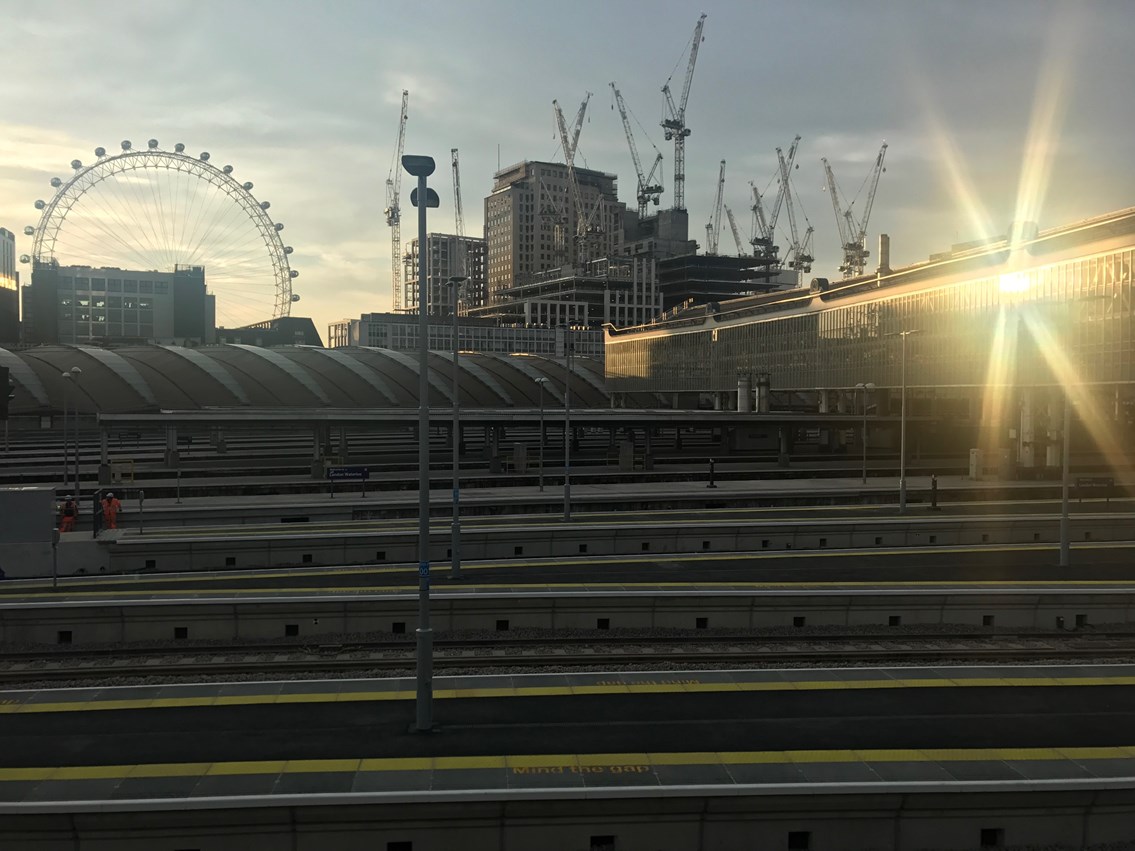Wednesday 24 Jul 2019
Wessex route gets ready for record-breaking heatwave on Thursday 25 July
- Region & Route:
- Southern: Wessex
- Whilst most of the railway operates normally in hot conditions, Network Rail and South Western Railway are working together to mitigate the impact of what could be record-breaking temperatures
- Network Rail has activated its ‘extreme weather action teams’ (EWATs) on the South Western Railway network to minimise heat-related infrastructure problems and keep passengers moving safely
- Passengers are advised to check services before travelling, with large numbers expected to head out across the south west to enjoy the warm weather over the next few days
Our network is made of steel track which absorbs heat easily. In direct sunshine rails can exceed 50 degrees, causing them to expand. In extreme cases, when rails cannot expand any further, they can buckle.
To reduce the likelihood of buckling, in the most vulnerable locations during the hottest times of the day, we may have to introduce speed restrictions as slower trains apply lower forces to our rails.
To prepare for these high temperatures we have painted the most at-risk rails white, so they absorb less heat, reducing temperatures by up to 10 degrees. Cooling equipment has also been fitted to a number of other key assets across the Wessex route.
David Dickson, managing director for Network Rail’s Wessex route, said:
“With temperatures expected to exceed 35 degrees across the route this week, getting passengers to their destinations safely is our top priority.
“We will be doing all we can, along with our colleagues at South Western Railway, to keep passengers moving safely and comfortably throughout the heatwave.”
Passengers travelling via London Waterloo or Clapham Junction can top up water bottles at free refill points. There are two refill points at Waterloo, located on The Balcony adjacent to Platform 1 and on the ground floor concourse located next to Exit 2. At Clapham Junction a refill point can be found next to the main entrance barriers.
If you feel unwell before you start your journey, please do not travel. If you feel unwell while travelling, please get off at the next stop and speak with a member of staff.
Notes to Editors
- Since the last hottest summer in 2003, in 2018, we reduced the number of buckled rail incidents by 83%.
- When installing our steel rails, we use a process called stressing to protect against buckling. Stressing the rails allows us to set the range of temperatures the track can comfortably cope with. Stressing our rails to cope with higher summer temperatures would mean making them less able to cope with low temperatures during the winter. Our rails have a stress-free temperature of 27oC, the average summer rail temperature in the UK. You can find more info here - https://www.networkrail.co.uk/why-rails-buckle-in-britain/
- Long periods without rain can mean the ground underneath the tracks dries out and shrinks, creating pothole-like cracks. Much like on the roads, trains can’t drive at full speed over these defects and have to slow down to keep passengers safe.
- Our teams work hard all year round to reduce minimise the disruption caused by hot weather. You can find more information about what we do here -https://www.networkrail.co.uk/running-the-railway/looking-after-the-railway/delays-explained/buckled-rail/
- More information on climate change and weather resilience on the railway is available here - https://www.networkrail.co.uk/communities/environment/climate-change-weather-resilience/
Contact information
Passengers / community members
Network Rail national helpline
03457 11 41 41
Latest travel advice
Please visit National Rail Enquiries
Journalists
Network Rail press office - James Crook
Senior Media Relations Manager
Network Rail
07732 644202
james.crook@networkrail.co.uk
About Network Rail
We own, operate and develop Britain's railway infrastructure; that's 20,000 miles of track, 30,000 bridges, tunnels and viaducts and the thousands of signals, level crossings and stations. We run 20 of the UK's largest stations while all the others, over 2,500, are run by the country's train operating companies.
Usually, there are almost five million journeys made in the UK and over 600 freight trains run on the network. People depend on Britain's railway for their daily commute, to visit friends and loved ones and to get them home safe every day. Our role is to deliver a safe and reliable railway, so we carefully manage and deliver thousands of projects every year that form part of the multi-billion pound Railway Upgrade Plan, to grow and expand the nation's railway network to respond to the tremendous growth and demand the railway has experienced - a doubling of passenger journeys over the past 20 years.
Follow us on Twitter: @networkrail
Visit our online newsroom: www.networkrailmediacentre.co.uk

